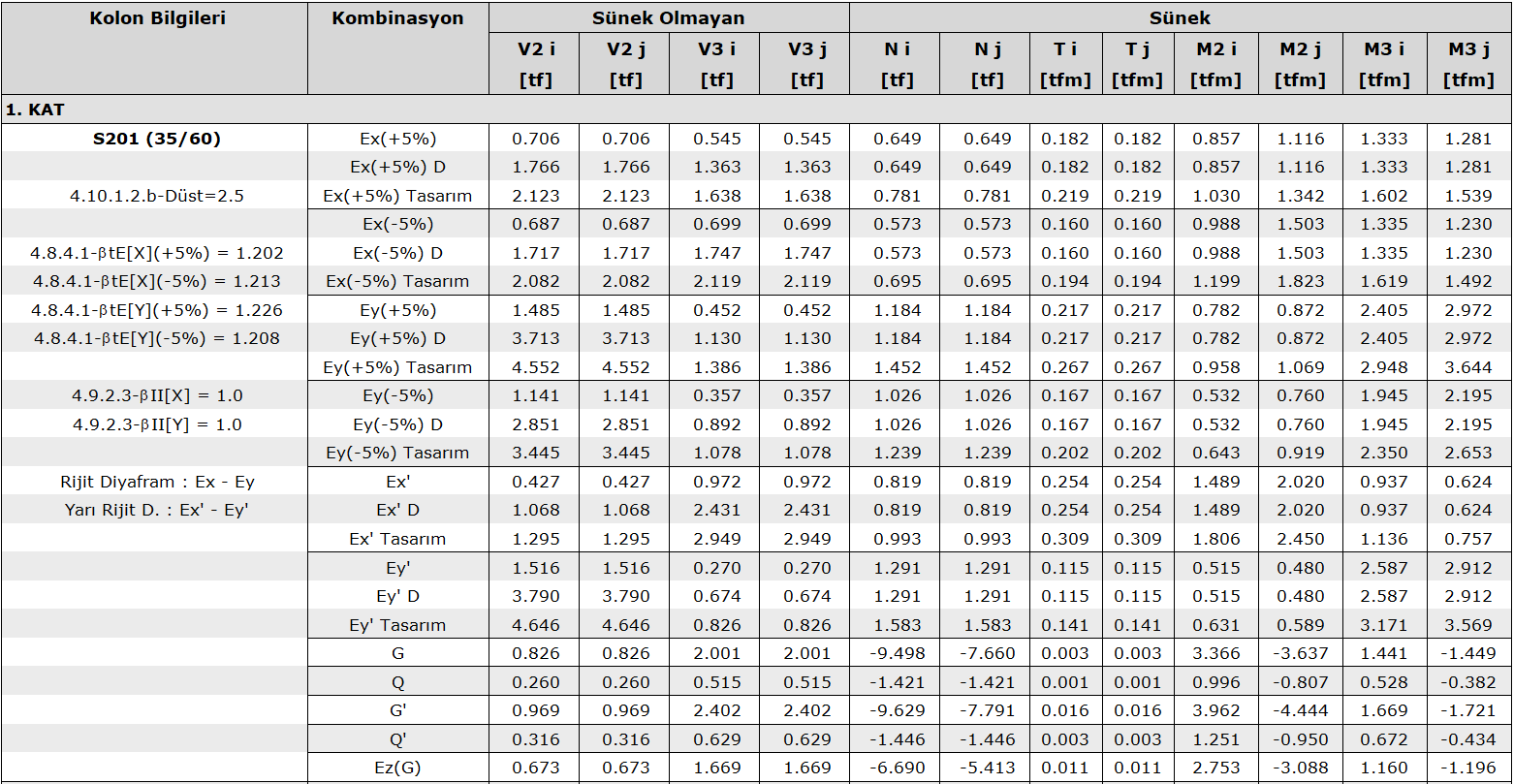Overstrength Factor (4.3.5.1)
The Strength Excess Coefficient D is automatically calculated according to the carrier systems selected from TBDY Table 4.1 .
ICONS
D = Strength Redundancy Coefficient
R = Carrier System Behavior Coefficient
Strength Excess Coefficient D is the coefficient that was introduced for the first time with TBDY 2018, asAppendix-4A Explanation defined, expressing the excess of yield strength compared to the design strength.
Strength Excess Coefficient means that the internal forces corresponding to brittle behavior are increased to yield strength level. The effects such as the design strength obtained by reducing the earthquake effect by the R coefficient determined depending on the ductility of the structure , the shear force for reinforced concrete showing only brittle effect, the forces affecting the joint for steel, are increased by the D coefficient and designed according to the yield strength, which is their real strength. The aim is to prevent brittle damage to structural members and brittle collapse of the building system.

Strength Excess Coefficient, D, is not used in reduced internal forces such as bending moment and axial force, which have ductile behavior. For reinforced concrete, the shear force corresponding to the brittle behavior, for steel varies according to the type of load-bearing system, for example , D for axial force is used as a multiplier only in the columns of moment transfer frames . If we examine a reinforced concrete column as an example, among the internal forces determined due to the horizontal earthquake effect, only the shear forces should be multiplied by D and the other internal forces should not be changed. D coefficient is used as 1 for vertical effects and vertical earthquake effects .

In structural systems with high ductility level , the internal forces increased by the D factor cannot be taken higher than the internal forces compatible with the yield state defined based on the principle of capacity design. In the system design, different upper limits for reinforced concrete and steel elements are calculated depending on the material behavior and since a higher yield strength than these upper limits will not be possible , forces increased with D are not allowed above certain limits.
